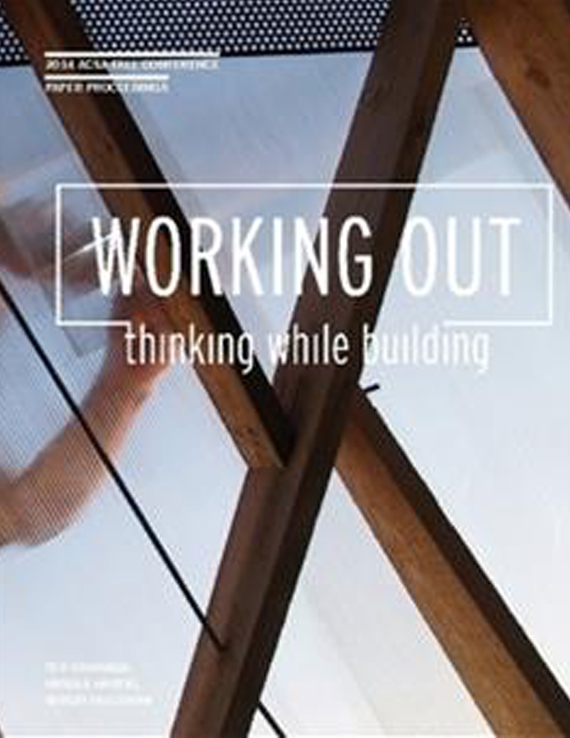Author(s): Kristy Balliet
This paper explores how digital modeling, material studies and rapid prototyping can be connected to produce surface models that explore architectural volume. The research includes work from a range of pedagogical contexts –foundational design studios and advanced seminars– that address the design/build issue of scaling up the architectural model in anticipation of full scale construction. The large physical model prioritizes modeling fitness and relies on a cultivated relationship between digital and analog fabrication. The work is exploratory and draws connections between contemporary volumetric ambitions and fabrication capabilities as a design development and a pedagogic model.The workflow moves between digitally calibrated tactics and intuitive revisions resulting in visually rich volumetric environments that can be accessed by the designer. The process interrogates multiple geometries to create intricate relationships between interior and exterior, expanding the contemporary capacity of architectural poche. The prompt for large surface models early in the design process inspires construction innovation. Literal and figurative problem areas arise that offer opportunities for targeted toning and editing. This is architectural calisthenics. The large model can be operated on from within, have parts added and removed and sponsors multiple iterations. It strikes a balance between the precious qualities associated with 3D printing and the heft of a full-scale mock up. In many cases, especially within a teaching context, surfaces are developable, computationally calculated, precisely cut and manually assembled. Negotiating between three-dimensional and two-dimensional surfaces anticipates the planar quality of most building materials and promotes construction innovation. The large model necessitates multiple construction techniques and addresses issues of tectonics. As models scale up, connections, seams and detail considerations are paramount. Testing the fitness of the architectural model sharpens the specificity of the design intent. Design tasks that challenge issues of orientation incite the introduction of gravity by asking can it stand up, can it hang and can it tumble? A robust and fit model can. Large models simultaneously exhibit structural and spatial qualities. They examine two critical aspects within the discipline of architecture: the creation of borders (edges, transitions, threshold, corners) and the creation of space (enclosure, volume, interiority). The selected projects isolate, interrogate and exaggerate the potential of these aspects as a means to wrestle convention and challenge typologies.Today in academia there is a tendency towards vagueness, guised as mysterious and masquerading as promise. Instruction through the large scale models similar to the design/build project aims to contest this notion. The papers focuses on a series of design investigations that construct dog-sized models as the primary mode of representation to address contemporary issues related to volume and construction technology. Model fitness is an explicit pedagogic intention to develop and hone design skills and articulate ambitions in direct relation to the tradition of architecture. The research approach seeks a connection between calibrated computation and general form finding which blurs and challenges the contemporary dialogue of design research, technique and application.
Volume Editors
Sergio Palleroni, Ted Cavanagh & Ursula Hartig
ISBN
978-0-935502-94-7

 Study Architecture
Study Architecture  ProPEL
ProPEL 
